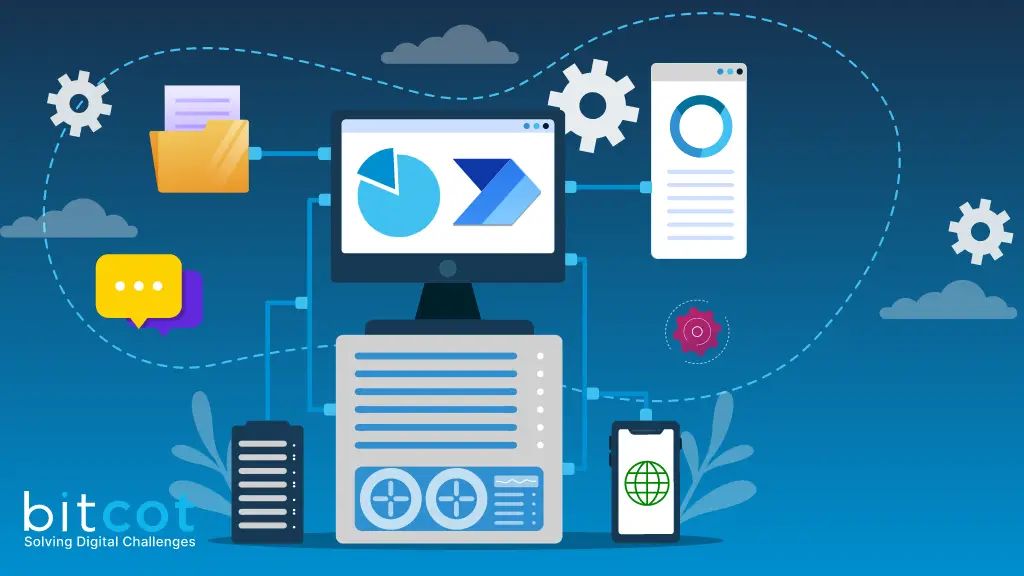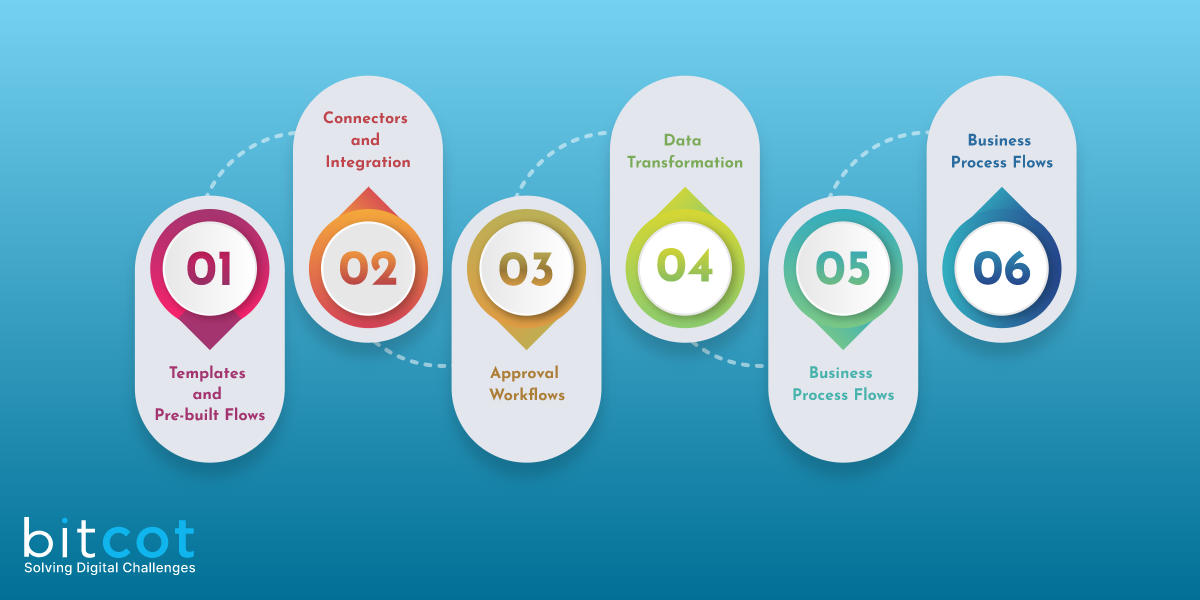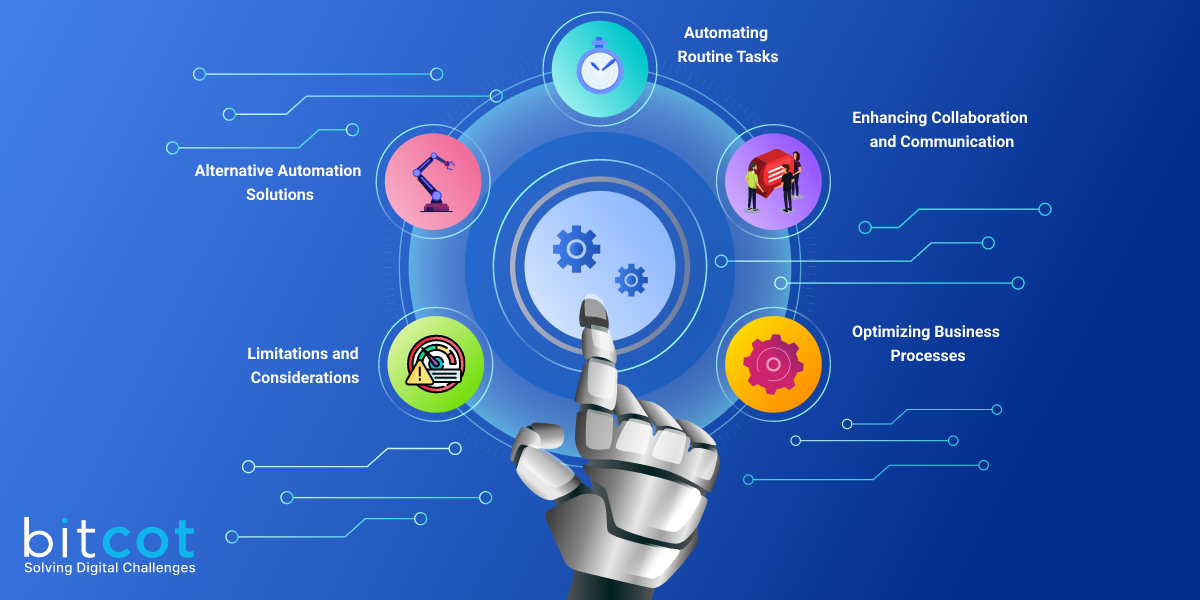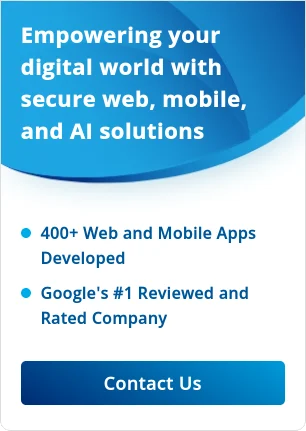
In an era of digital transformation, businesses are constantly seeking innovative ways to streamline their processes and boost productivity. One tool that has emerged as a game-changer in this landscape is Microsoft Power Automate. As a robust workflow automation platform, Power Automate enables organizations to automate repetitive tasks, integrate various systems and applications, and optimize their business processes. In this article, we will delve into the world of Microsoft Power Automate, exploring its functionality, key features, suitability for different scenarios, licensing options, and why it has become an indispensable tool for modern businesses.
How Does Microsoft Power Automate Work?

Microsoft Power Automate is a cloud-based workflow automation platform that enables organizations to automate repetitive tasks and streamline their business processes. It operates on a “trigger-action” model, where users define triggers that initiate specific actions when certain events occur. Here’s a breakdown of how Power Automate works:
Triggers: Power Automate offers a wide range of triggers that can initiate automation. These triggers can be event-based, such as receiving an email, creating a new record in a database, or a file being added to a folder. They can also be time-based, where an action is scheduled to occur at a specific time or interval. Triggers serve as the starting point for automation and determine when it should be executed.
Actions: Once a trigger event occurs, Power Automate executes the predefined actions associated with that event. Actions can be performed within the same application or across multiple applications and services through connectors. For example, an action could involve:
- Sending an email.
- Creating a task.
- Updating a database record.
- Generating a report.
- Posting a message on a collaboration platform.
Power Automate provides a vast library of connectors that facilitate seamless integration with various systems and applications.
Conditions and Controls: In addition to triggers and actions, Power Automate allows users to incorporate conditions and controls into their workflows. Conditions enable users to define logical rules that determine whether certain actions should be executed based on specific criteria. Controls, such as loops and parallel branches, provide the ability to create more complex and dynamic workflows. These features allow users to incorporate decision-making and branching logic into their automation.
Flow Design: Power Automate offers a visual interface that allows users to design their workflows using a drag-and-drop approach. Users can select triggers, actions, and connectors from the interface and arrange them in a logical sequence to create the desired automation. The visual interface simplifies the process and eliminates the need for extensive coding knowledge.
Execution and Monitoring: Once a workflow is designed, Power Automate handles the execution of the automation in the cloud. The platform ensures scalability, reliability, and security in running the workflows. Users can monitor the status and performance of their flows through the Power Automate interface, track the execution history, and troubleshoot any issues that may arise.
Overall, Microsoft Power Automate operates by defining triggers, actions, and conditions to automate tasks and workflows. Its cloud-based infrastructure, visual interface, and extensive connector library make it accessible and powerful for organizations of all sizes. By leveraging Power Automate, businesses can streamline their processes, reduce manual effort, and improve overall efficiency.
Key Features of Power Automate

Power Automate boasts a rich set of features that empower businesses to automate, optimize, and orchestrate their operations. This section will provide an in-depth look at some of the platform’s key features, including:
Templates and Pre-built Flows:
Power Automate offers a vast collection of templates and pre-built flows that cover a wide range of common automation scenarios. These templates serve as ready-to-use blueprints, allowing users to quickly create and customize workflows without starting from scratch. Templates are available for various processes, such as managing approvals, sending notifications, tracking data, and integrating with popular applications like SharePoint, Outlook, and Salesforce. Users can easily browse and search for templates within the Power Automate interface, making it convenient to find and implement automation solutions.
Connectors and Integration:
One of the standout features of Power Automate is its extensive library of connectors. Connectors are pre-built integrations with a wide range of applications and services, both from Microsoft and third-party providers. These connectors enable seamless communication and data exchange between different systems, allowing organizations to create end-to-end automated workflows. Power Automate offers hundreds of connectors, including popular applications like Microsoft Office 365, Dynamics 365, SharePoint, and Teams, as well as third-party services like Salesforce, Slack, Google Drive, and more. The connectors eliminate the need for custom API integration and provide a robust foundation for automating tasks across multiple platforms.
Approval Workflows:
Power Automate simplifies and streamlines the process of managing approvals within an organization. With its built-in approval workflows, users can easily create automated approval processes for documents, requests, or any other business-related tasks. Users can define approval steps, specify approvers, and set up conditions for approval or rejection. The approval workflows can be customized to fit specific business requirements, such as parallel or sequential approvals, escalation paths, and delegation rules. Additionally, Power Automate integrates with Microsoft Teams, Outlook, and other collaboration tools, enabling users to receive approval requests, provide feedback, and track the status of approvals directly within their preferred communication channels.
Data Transformation:
Power Automate offers a range of data transformation capabilities, allowing users to manipulate, transform, and enrich data as it flows through the automation workflows. Users can leverage built-in functions, expressions, and actions to perform operations like data extraction, formatting, filtering, and aggregation. Power Automate also offers integration with Azure Data Factory, enabling users to leverage advanced data transformation capabilities and perform complex data manipulations using Azure services. These data transformation features enable organizations to ensure data quality, consistency, and compatibility across different applications and systems.
Business Process Flows:
With Power Automate, users can create and automate end-to-end business process flows, guiding users through a sequence of steps or tasks. This feature is particularly beneficial for streamlining and standardizing complex business processes that involve multiple stakeholders and systems. Users can define the flow of activities, set conditions for progress, and incorporate decision-making logic into the process. Power Automate’s business process can be integrated with other services and applications, such as Dynamics 365 or custom line-of-business applications, to deliver a unified and guided user experience.
Analytics and Monitoring:
Power Automate provides robust analytics and monitoring capabilities to track, analyze, and optimize automated workflows. Users can access real-time dashboards and reports that provide insights into flow performance, usage statistics, and error tracking. These analytics enable users to identify bottlenecks, monitor the health of workflows, and make data-driven decisions for process improvement. Additionally, Power Automate integrates with other Microsoft services like Power BI, enabling users to create customizable visualizations and gain deeper insights into the performance and impact of their automated processes.
Microsoft Power Automate offers a comprehensive set of features that empower organizations to automate workflows, integrate systems, and optimize their operations. From templates and connectors for easy and quick workflow creation to approval workflows, data transformation capabilities, business process flows, and analytics and monitoring tools, Power Automate provides a robust platform for automation and optimization. By leveraging these features, businesses can streamline processes, improve efficiency, and drive productivity across their operations.
Is Microsoft Power Automate Right for You?

While Microsoft Power Automate offers a wide range of capabilities for workflow automation, it’s essential to assess whether it aligns with your organization’s specific needs and requirements. Here are some scenarios where Power Automate excels, as well as its limitations and alternative solutions to consider:
Automating Routine Tasks:
Power Automate is particularly well-suited for automating repetitive and time-consuming tasks. Whether it’s processing incoming emails, archiving files, or updating data across multiple systems, Power Automate can streamline these processes, reducing human error and freeing up valuable time for employees. The platform’s intuitive visual interface and extensive library of pre-built templates make it accessible to users with diverse technical backgrounds.
Enhancing Collaboration and Communication:
Power Automate integrates seamlessly with Microsoft Teams, SharePoint, and other collaboration tools, enabling organizations to automate and streamline communication and collaboration processes. For example, you can create flows that automatically notify team members when specific events occur, trigger approval processes for document reviews, or synchronize data between different team channels. Power Automate’s connectors and integration capabilities make it easy to bridge the gap between various applications and enhance teamwork and productivity.
Optimizing Business Processes:
Power Automate can be a valuable tool for optimizing complex business processes. By leveraging its features like approval workflows, business process flows, and data transformation capabilities, organizations can automate end-to-end processes and ensure consistency and efficiency. For instance, you can automate customer onboarding, invoice processing, or IT support ticket routing. Power Automate’s integration with other Microsoft applications, such as Dynamics 365, enables seamless automation across different departments and systems within the organization.
Limitations and Considerations:
While Power Automate offers a robust set of features, there are certain limitations to keep in mind:
a. Complex Automation Scenarios: While Power Automate’s visual interface caters to users with limited coding experience, more complex automation scenarios may require advanced configuration or custom coding. If your organization has highly intricate workflows or specific integration requirements, you might need additional technical expertise or consider other automation platforms that offer more advanced customization options.
b. Performance and Scalability: Power Automate’s performance and scalability depend on the chosen licensing plan. The free plan and per-user plans have certain limitations on execution frequency, number of flows, and advanced features. Suppose your organization requires high-volume automation or advanced capabilities like parallel execution or on-premises data gateways. In that case, you may need to opt for the Power Automate Premium plan or explore alternative enterprise-grade automation solutions.
c. External System Limitations: Power Automate’s capabilities depend on the availability and functionality of connectors for external applications and services. While Power Automate provides a vast ecosystem of connectors, some niche or proprietary systems may have yet to have pre-built connectors available. In such cases, you may need to develop custom connectors or explore other automation tools that provide better integration options for your specific systems.
d. Cost Considerations: Power Automate offers multiple licensing options, and the cost varies based on the chosen plan and usage requirements. It’s crucial to evaluate your organization’s automation needs, flow volume and desired features against the pricing structure to ensure cost-effectiveness. Consider factors such as the number of users, flows, and premium connector requirements when evaluating the total cost of ownership.
Alternative Automation Solutions:
Depending on your organization’s specific requirements, you may also consider alternative automation solutions:
a. Robotic Process Automation (RPA): RPA tools like UiPath or Automation Anywhere focus on automating repetitive tasks by mimicking human interactions with applications. RPA is suitable for scenarios that involve complex desktop applications or legacy systems that lack APIs or connectors.
b. Low-Code/No-Code Platforms: Low-code or no-code platforms like Microsoft Power Apps or Mendix allow users to build custom applications and workflows without extensive coding. These platforms offer a higher level of customization and flexibility for organizations that require more control over the application’s behaviour and user experience.
c. Custom Development: For highly specialized or unique automation requirements, custom development using programming languages and frameworks might be the best approach. This option provides maximum flexibility but requires significant development effort and technical expertise.
Microsoft Power Automate offers a powerful platform for workflow automation, collaboration, and process optimization. It excels in automating routine tasks, enhancing collaboration, and streamlining business processes. However, it’s essential to evaluate your organization’s specific needs, complexity of automation scenarios, technical expertise, and integration requirements before deciding if Power Automate is the right fit. Consider its capabilities, limitations, and cost implications, and explore alternative automation solutions if necessary. By making an informed decision, you can leverage automation tools that best align with your organization’s goals and drive efficiency and productivity.
Power Automate Licensing

Microsoft offers different licensing options for Power Automate to accommodate the diverse needs of organizations. The licensing models include Power Automate Free, Power Automate Per User, and Power Automate Per Flow. Understanding these options will help you select the appropriate licensing tier based on your organization’s requirements and budget.
Power Automate Free:
Power Automate Free is the no-cost licensing tier that provides basic automation capabilities. It allows users to create and run unlimited flows with certain limitations. While this tier is suitable for individuals or small teams looking to automate simple processes, it has some restrictions. For example, the free tier has limited access to premium connectors, on-premises data gateways, and advanced administration and management features. Additionally, there are limitations on the number of flow runs, frequency, and execution time. Power Automate Free serves as an excellent starting point for exploring the platform’s capabilities before deciding on a paid licensing option.
Power Automate Per User:
Power Automate Per User is a licensing model that provides more advanced capabilities and is tailored to individual users. With this licensing option, users have access to premium connectors, on-premises data gateways, and advanced administration features. It offers higher flow runs and frequency limits compared to the free tier. Power Automate Per User is suitable for organizations that require automation capabilities for specific users or departments. It offers flexibility as users can create and run an unlimited number of flows within their allocated capacities. This licensing model is typically priced on a per-user, per-month basis.
Power Automate Per Flow:
Power Automate Per Flow is a licensing model that focuses on the flow execution rather than the number of users. It allows organizations to purchase flow runs in bulk, enabling them to distribute and allocate flow executions across multiple users or systems. This licensing option is suitable for scenarios where flows are executed at a higher volume, such as enterprise-wide automation or integration with external systems. Power Automate Per Flow provides the flexibility to scale automation without worrying about user-based licensing costs. It offers more control over flow execution and is priced based on the number of flow runs or flow runs per minute.
Selecting the Right Licensing Tier:
Choosing the appropriate licensing tier depends on your organization’s requirements and budget. Here are some factors to consider:
User-based vs. Flow-based: Assess whether your organization needs user-specific automation capabilities or flow-based execution. If you have a small number of users who require advanced automation features, Power Automate Per User may be the most cost-effective choice. On the other hand, if you have a large number of users or require high-volume flow execution, Power Automate Per Flow might be more suitable.
Premium Connector Requirements: Determine if your automation processes rely on premium connectors that are not available in the free tier. If you require access to specific premium connectors, such as Salesforce or SharePoint Online, you may need Power Automate Per User or Per Flow licensing.
Flow Execution Volume: Evaluate the expected volume of flow executions within your organization. If you anticipate a high number of flow runs, Power Automate Per Flow allows you to purchase flow runs in bulk, providing cost savings compared to user-based licensing models.
Advanced Administration and Management: Consider if your organization requires advanced administration and management features, such as usage analytics, data loss prevention policies, or tenant-level access control. These features are available in the Power Automate Per User licensing tier.
Budget Considerations: Take into account your organization’s budget and cost constraints. Power Automate Free provides basic automation capabilities at no cost, making it an attractive option for individuals or small teams. Power Automate Per User and Per Flow licensing tiers involve additional costs, but they offer more advanced features and scalability.
It’s worth noting that Microsoft frequently updates its licensing models, plans, and pricing. Therefore, it’s advisable to consult the official Microsoft documentation or contact their sales representatives to get the most up-to-date information regarding Power Automate licensing options and pricing.
By carefully evaluating your organization’s automation requirements, considering the available licensing options, and aligning them with your budget, you can choose the most suitable Power Automate licensing tier that meets your needs and maximizes the value of your automation initiatives.
Conclusion
In conclusion, Microsoft Power Automate is a formidable asset for organizations aiming to automate workflows, boost productivity, and achieve operational efficiency. With its user-friendly interface, vast library of connectors, and diverse feature set, it empowers businesses to tackle the challenges of the digital age head-on. By leveraging Power Automate, organizations can streamline their processes, reduce manual effort, and eliminate bottlenecks.
For those looking to maximize the benefits of Power Automate, seeking Microsoft Power Automate consulting services can be a valuable investment. These services are provided by experienced consultants who specialize in implementing and optimizing Power Automate solutions tailored to the unique needs of each organization.
Microsoft Power Automate consulting services offer several advantages. First, consultants bring in-depth knowledge and expertise in workflow automation, ensuring that organizations make the most out of the platform’s capabilities. They can assist in designing efficient workflows, identifying automation opportunities, and integrating Power Automate with existing systems and applications.
Additionally, consultants can guide best practices, ensuring that organizations adhere to industry standards and optimize their automation initiatives. They can help with flow design, data transformation, complex process automation, and troubleshooting, enabling organizations to overcome challenges and achieve desired outcomes.
Moreover, consultants can offer training and support to users, empowering them to leverage Power Automate effectively. This includes educating employees on the platform’s functionalities, guiding them through the automation implementation process, and providing ongoing assistance as needed.
By partnering with Microsoft Power Automate consulting company, organizations can accelerate their automation journey, minimize implementation risks, and unlock the full potential of the platform. Consultants can help organizations align their automation strategy with business goals, identify opportunities for process improvement, and ensure a smooth transition to automated workflows.microsoft-power-automate-consulting









